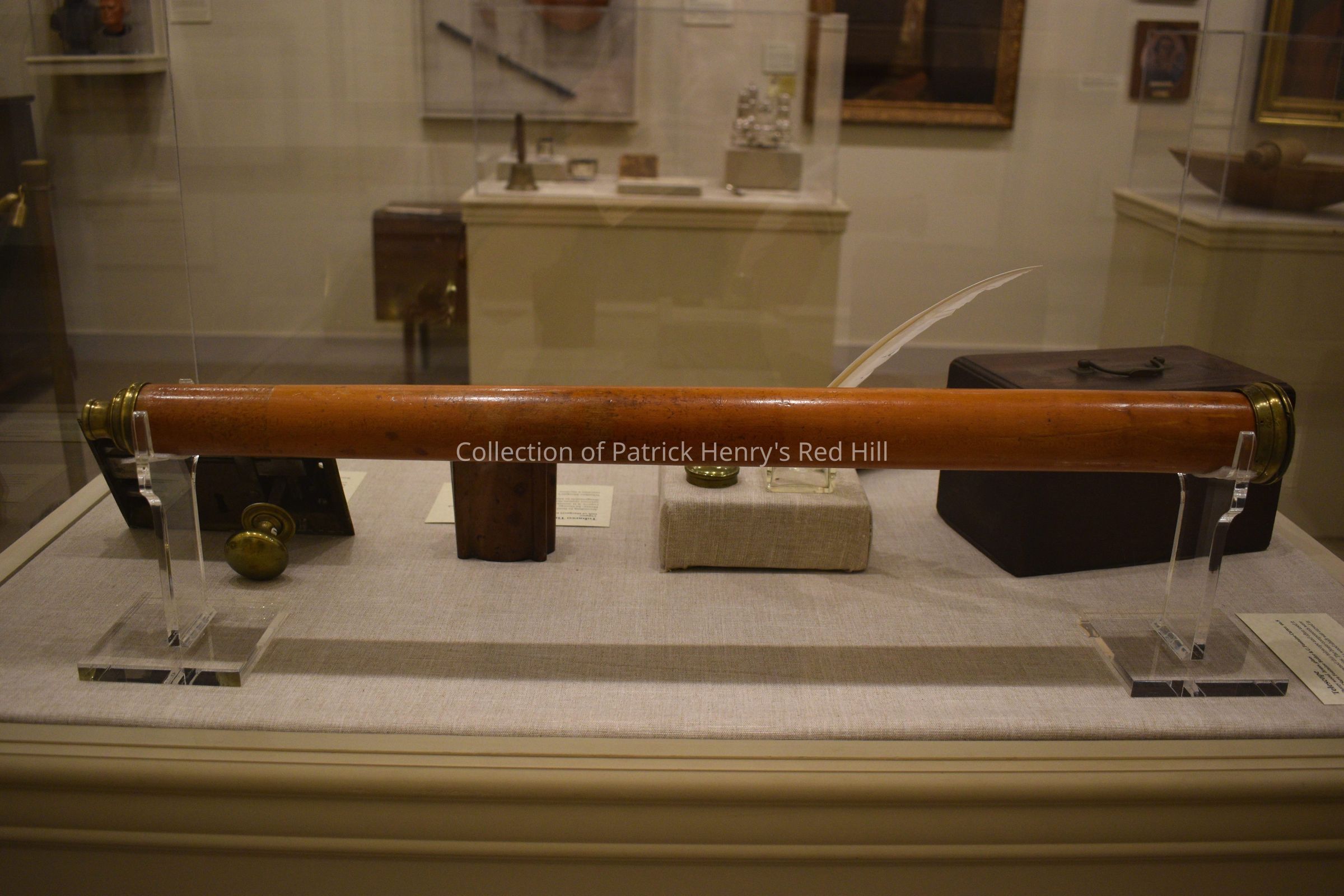Notes
This achromatic telescope is said to have belonged to Patrick Henry. As an avid reader of scientific publications, including "Philosophical Transactions of the Royal Society," Henry likely utilized this instrument in his studies on astronomy.
Achromatic telescopes are refracting telescopes that utilize an achromatic lens to correct for chromatic aberration, a phenomenon where a lens fails to focus all colors to the same point. Refractors were the earliest type of optical telescope. An achromatic lens is a compound lens composed of two types of glass with different dispersions. One element, a concave lens made out of Flint glass, has relatively high dispersion, while the other, a convex element made of Crown glass, has a lower dispersion.
Optical instrument maker Charles Lincoln (1744–1807) made this telescope in London, England, around 1785. Charles took over his father Thomas Lincoln's (ca. 1696–ca. 1761) business around 1761 and is recorded as trading at 11 Cornhill, near the Poultry, London, in 1763. By 1772, he had relocated his business to 62 Leadenhall Street, where he likely manufactured this telescope, along with an array of other instruments, including microscopes, thermometers, and surveyors' levels.
Family tradition holds that Patrick Henry gave this telescope to his daughter Elizabeth "Betsey" Henry Aylett (1769–1842), who then gave it to to her daughter, Sarah Shelton Aylett Fontaine (1811–1876), then to her son Patrick Henry Fontaine (1841–1915), to his son Philip Aylett Fontaine Sr. (1868–1936), and then to his daughter, Sara Henry Fontaine Fetter (1911–2010).
The telescope was given to the Patrick Henry Memorial Foundation by Sara Henry Fetter on October 4, 1999.
